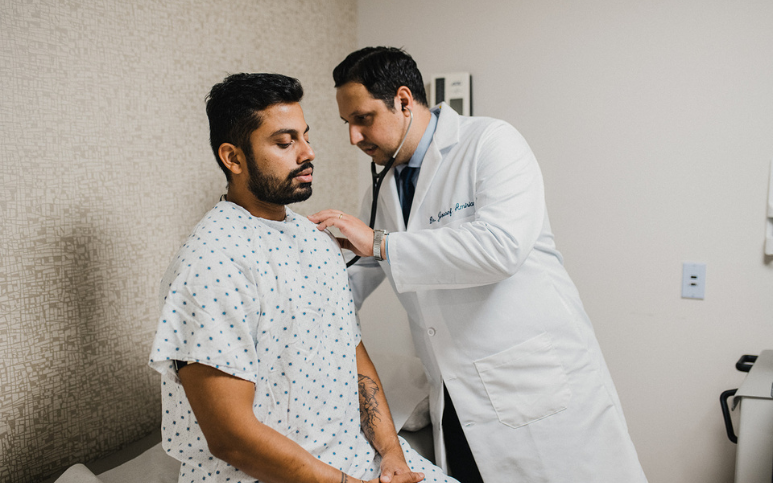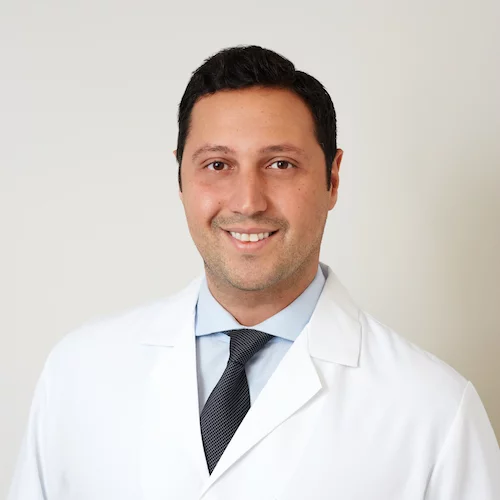What is a Stroke?
A stroke is a severe cardiovascular condition that occurs when blood flow to the brain is disrupted, leading to brain cell death from lack of oxygen. This can happen due to a ruptured or blocked artery or a blood clot. Stroke is considered a medical emergency and is one of the leading causes of death in the United States, with approximately 140,000 deaths annually.
What Are The Causes of a Stroke?
A stroke can be caused by one of two main factors: a blocked blood vessel or a ruptured blood vessel. An ischemic stroke occurs when a clot or plaque deposit blocks an artery, preventing blood from reaching the brain. A hemorrhagic stroke happens when a blood vessel in the brain ruptures and bleeds into the brain. This type of stroke can be caused by trauma or a cardiovascular condition such as hypertension.
Transient Ischemic Attack (“Mini-Stroke”)
A Transient Ischemic Attack (TIA), also known as a “mini-stroke,” is a temporary interruption of blood flow to the brain. The symptoms resemble those of a stroke, but typically disappear on their own without any lasting damage. However, it is important not to ignore the signs and symptoms of a TIA and to seek medical attention immediately by calling 911.
What Are The Signs And Symptoms of a Stroke?
The signs and symptoms of a stroke are crucial to identify in order to get medical attention as quickly as possible. Remember the acronym FAST:
F: Face – Check for drooping or numbness on one side of the face by asking the person to smile.
A: Arms – Observe weakness or difficulty lifting one arm.
S: Speech – Listen for slurred or difficult to understand speech.
T: Time – Call 911 immediately if any of these signs are present, as time is of the essence in treating a stroke.
Other indications of a stroke may include a sudden, severe headache, nausea or vomiting, dizziness, confusion, difficulty standing or walking, and/or loss of vision in one or both eyes. It is important to remember that fast action can be critical in preventing severe complications or death.
What Are The Risk Factors of a Stroke?
Risk factors for a stroke include demographic factors beyond your control, such as being male, older than 55, and African-American, as well as having a family history of stroke. Additionally, lifestyle factors such as stress, obesity, lack of exercise, smoking, and excessive alcohol consumption can increase your risk. Medical conditions that affect blood flow, including high blood pressure, diabetes, sleep apnea, and cardiovascular disease, may also increase your risk of stroke. Taking certain blood thinners can also increase your risk. COVID-19 may also cause stroke as a complication.
How is a Stroke Diagnosed?

A stroke diagnosis is made quickly as time is crucial. To diagnose a stroke, a doctor will initially assess symptoms and conduct a physical examination. Additional tests such as blood tests, CT scans, MRIs, and echocardiograms may also be performed to determine the type of stroke.
What Are Possible Treatments For a Stroke?
Treatment options for a stroke depend on the cause. Ischemic strokes, caused by a blood clot, may be treated in the first few hours with drugs that dissolve the clot. Surgery to prevent future blockages may also be recommended. For a hemorrhagic stroke, medications may be used to lower blood pressure and ease pressure on the brain. Surgery to repair the ruptured blood vessel may also be necessary.
Are There Preventative Steps or Measures To Avoid a Stroke?
To reduce your risk of stroke, it is important to maintain a heart-healthy lifestyle by exercising regularly, eating a healthy diet, and avoiding smoking and excessive alcohol consumption. Taking medications prescribed by your physician and managing any related conditions such as diabetes or high blood pressure is also important. If you’ve had a stroke in the past, it is especially crucial to take these preventative steps, as 25% of people will experience another stroke within five years. At Medical Offices of Manhattan, we offer stroke screenings to assess your risk. You can schedule an appointment for screening if you have a family history of stroke or are concerned about your risk.
What Are The Risks If a Stroke Is Left Untreated?
If a stroke is not treated promptly, the risk of long-term complications increases. Possible consequences of untreated stroke include brain damage, paralysis, permanent speech or swallowing difficulties, memory loss, and death.
Are There Other Related Conditions To a Stroke?
Other conditions that may increase the risk of a stroke include atrial fibrillation, high blood pressure, and obstructive sleep apnea.
Key Takeaways About a Stroke
A stroke is a serious medical event that occurs when the brain is deprived of oxygen and nutrients due to a blocked or interrupted blood flow. This can happen in two ways: an obstruction in the blood vessels (ischemic stroke) or a burst blood vessel (hemorrhagic stroke). Risk factors for stroke include family history, age, and pre-existing cardiovascular conditions such as high blood pressure or diabetes. Symptoms of a stroke, such as facial drooping, weakness in an arm, or slurred speech, should be taken seriously and addressed immediately as the longer a stroke goes untreated, the greater the risk of death, brain damage and other serious complications.



